#吉��ヶ里遺跡
Explore tagged Tumblr posts
Text
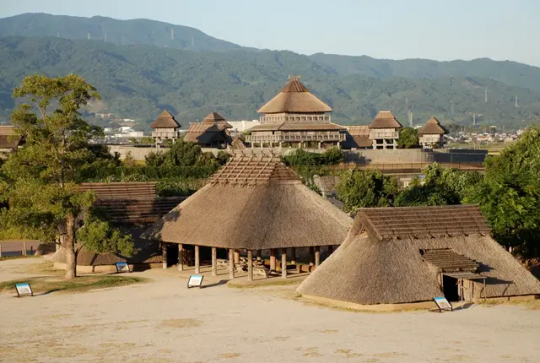
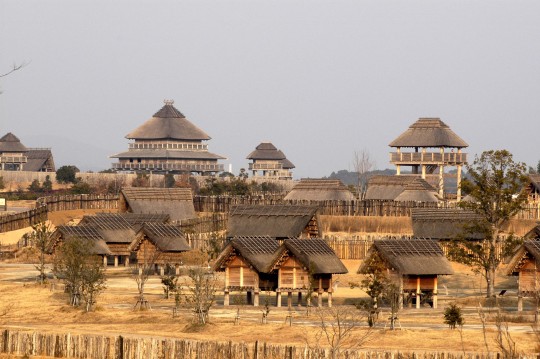
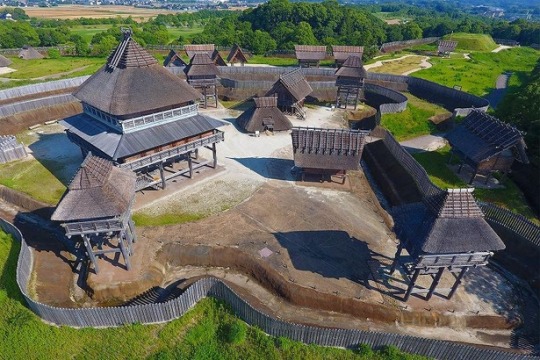
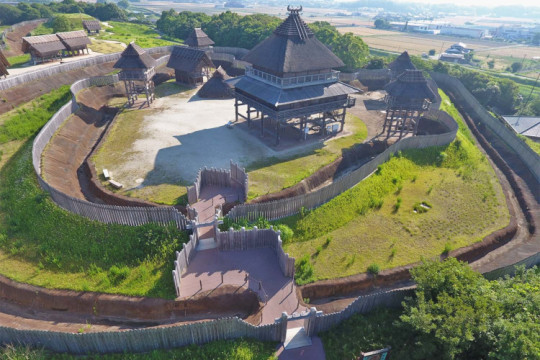
Sean bienvenidos, japonistasarqueológicos, a una nueva entrega de arqueología nipona, una vez dicho esto pónganse cómodos qué empezamos. — En la publicación anterior estuvimos hablando de las ruinas de Yoshinogari, que datan del período Yayoi (300-250) pero en este caso del Yayoi tardío y se localizan en la prefectura de Saga. Esta vez vamos a profundizar un poco más en dicho yacimiento. En la década de 1928-1986 y hasta el presente se han estado hallando restos arqueológicos nuevos. Pero las excavaciones y las investigaciones empezaron en 1928, esta fecha corresponde a la era taisho, también se realizaron excavaciones en Fukuoka la prefectura vecina, principalmente ligados a dos temas, la agricultura y la innovación industrial. En la prefectura de saga, se encontraron vasijas del periodo Yayoi, hasta del periodo Nara, hay que entender que el lugar ha podido ser utilizado en periodos históricos simultáneos, desde la prehistoria hasta nuestros días, como ya mencionamos anteriormente, el yacimiento se localiza cerca del mar de Ariake. A 3 kilómetros nos encontramos las ruinas de Mitsunagata, que estaría cerca de la puerta del parque arqueológico. - En la década de los años 50, se desentierran en las zonas de cultivos, ataúdes de tinajas. En 1928 aparecen: brazaletes de conchas y cuencos de vidrio. Pero no será hasta la década de los años 70 cuando se hacen excavaciones a gran escala, inclusive prospecciones, al noreste de Yoshinogari en las que se encontraron, espejos de bronce y armas de hierro. Se hallaron restos de edificios que se creen que son almacenes de piso elevado. 1980-1982, se excavó arroz carbonizado, esto nos permitirá saber cuál era la dieta y la procedencia del mismo. En 1986, por motivos industriales y por el canal de agua en la prefectura de Saga que comunica el río Chikugo, hasta el río Kase, esto desentierra restos de fosos y huecos de postes de madera. — Espero que os haya gustado y nos vemos en próximas publicaciones, que pasen una buena semana. - 日本の考古学者の皆さん、日本の考古学の新しい記事へようこそ。そうは言っても、気を楽にして始めましょう。 — 前回は、弥生時代(300~250年)、今回は弥生後期、佐賀県にある吉野ケ里遺跡についてお話しました��� 今回はこの預金についてもう少し詳しく掘り下げていきます。 1928 年から 1986 年の 10 年間と現在に至るまでに、新しい考古学的遺跡が発見されています。 しかし、発掘調査が始まったのは大正時代にあたる1928年で、隣県の福岡でも主に農業と産業革新という2つのテーマに沿った発掘調査が行われました。 佐賀県では弥生時代から奈良時代の器物が出土しており、先史時代から現代に至るまでの同時期に使われていた可能性があることは、前述したとおりです。有明海の近く。 3キロほど離れたところに、遺跡公園のゲート付近にある三長田遺跡がある。 - 50年代の10年間に、栽培地域で壺の棺が発掘されました。 1928年に貝殻のブレスレットとガラスのボウルが登場しました。 しかし、吉野ヶ里の北東で測量を含む大規模な発掘が行われ、青銅鏡や鉄製の武器が発見されるのは70��代の10年になってからである。 高層倉庫とみられる建物跡が見つかった。 1980年から1982年にかけて焦げた米が発掘され、その食性や起源を知ることができます。 1986年、産業上の理由と、筑後川から嘉瀬川につながる佐賀県の水路の堀と木の柱穴の遺跡が発掘されました。 — 気に入っていただければ幸いです。今後の出版物でお会いしましょう。良い一週間をお過ごしください
Welcome, Japanese archaeologists, to a new installment of Japanese archaeology, having said that, make yourself comfortable and let's start. — In the previous post we were talking about the Yoshinogari ruins, which date from the Yayoi period (300-250) but in this case from the late Yayoi and are located in the Saga prefecture. This time we are going to delve a little deeper into said deposit. In the decade of 1928-1986 and up to the present, new archaeological remains have been found. But the excavations and investigations began in 1928, this date corresponds to the Taisho era, excavations were also carried out in Fukuoka the neighboring prefecture, mainly linked to two themes, agriculture and industrial innovation. In the prefecture of saga, vessels from the Yayoi period to the Nara period were found, it must be understood that the place could have been used in simultaneous historical periods, from prehistory to the present day, as we mentioned above, the site is located near of the Ariake Sea. 3 kilometers away we find the ruins of Mitsunagata, which would be near the gate of the archaeological park. - In the decade of the 50s, coffins of jars were unearthed in the cultivation areas. In 1928 they appear: shell bracelets and glass bowls. But it will not be until the decade of the 70s when large-scale excavations, including surveys, are made northeast of Yoshinogari in which bronze mirrors and iron weapons were found. Remains of buildings believed to be high-floor warehouses were found. 1980-1982, charred rice was excavated, this will allow us to know its diet and origin. In 1986, for industrial reasons and for the water channel in Saga Prefecture that connects the Chikugo River, to the Kase River, this unearths remains of moats and wooden post holes. — I hope you liked it and see you in future publications, have a good week.
#日本#韓国#考古学#遺跡#佐賀県#九州#歴史#先史#新石器時代#文化#吉野ヶ里遺跡#地理#弥生時代#有明海#唐津市#鍋岳遺跡#ユネスコ#Japan#Korea#Archaeology#Ruins#Saga Prefecture#Kyushu#History#Prehistory#Neolithic Age#Culture#Yoshinogari Ruins#Geography#Yayoi Period
46 notes
·
View notes
Photo
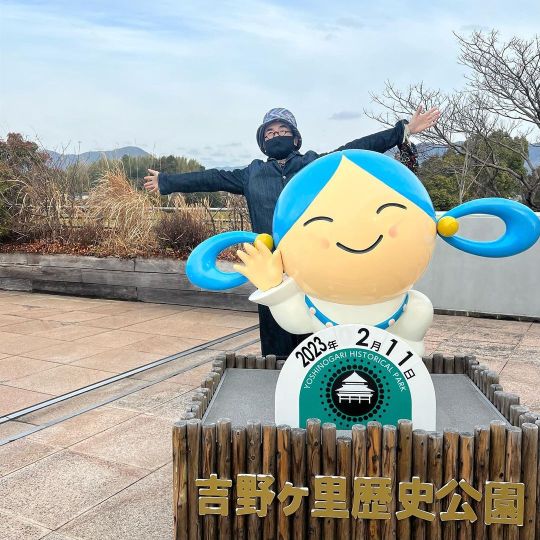
佐賀玉屋のイベントもあと2日! 開店前の限られた時間を使って、色々と佐賀を楽しませて頂いております♪😊 今日も佐賀玉屋1Fにて、皆様のご来店お待ちしております(*´∇`*) #メガネ #オーダーメイド #グラステーラー #handmade #glasses #glasstailor #madetoorder #bespoke #佐賀玉屋 #吉野ヶ里遺跡 #佐賀城跡 #長崎街道 #佐嘉神社 (佐賀玉屋) https://www.instagram.com/p/ColNZ9Ahp6u/?igshid=NGJjMDIxMWI=
0 notes
Text
Daily dose of Koubenians #8
Welcome to your daily dose of koubenians. We showcase some of our best art every day.
Aya at Yoshinogari

Sekibanki & Kogasa

Parsee & Friends

Don't Forget, You're Here Forever

#touhou#touhou project#東方project#touhou fanart#tegakidraw#artists on tumblr#kouburepost#illustration
40 notes
·
View notes
Photo

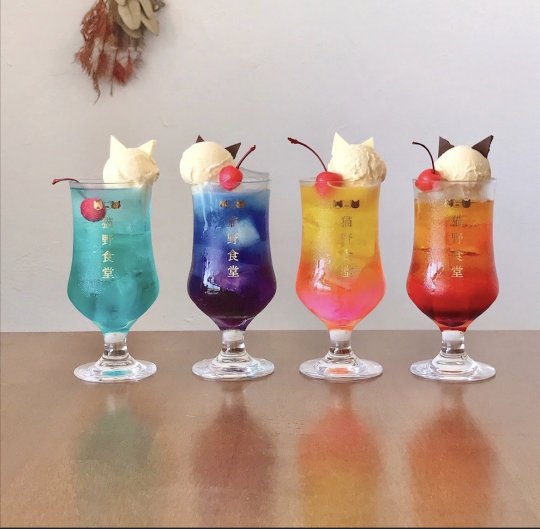

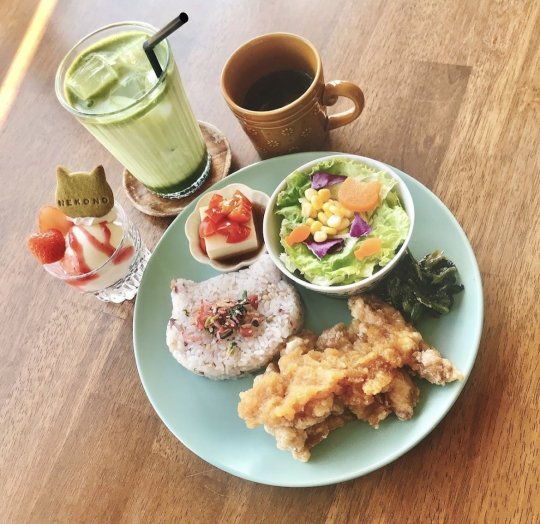
シソさんはTwitterを使っています: 「吉野ヶ里遺跡の石棺オープン待ちきれんな… あと遺跡近くの「猫野食堂」さん可愛すぎるから行ってみてくれ https://t.co/7vjt7COOaR」 / Twitter
72 notes
·
View notes
Text
「弥生人は二度死ぬ 再葬墓ってなに?」展

群馬県立歴史博物館で「弥生人は二度死ぬ 再葬墓ってなに?」展を見る。映画の『007は二度死ぬ』をもじったとおぼしき展覧会タイトルにつられて足を運んだ。
再葬墓(さいそうぼ)とは、遺体をいったん土に埋めるなどして白骨化させてから土器に納め、再び埋葬した墓のこと。群馬県は弥生時代の再葬墓の中心地のひとつなのだそう。
人骨の展示についての断り書きが最初にあった。人骨を無造作に研究対象にしていた過去が問題になって反省の動きが進んでいるようだし、このように立場を明らかにしておくのは大事だと思う。
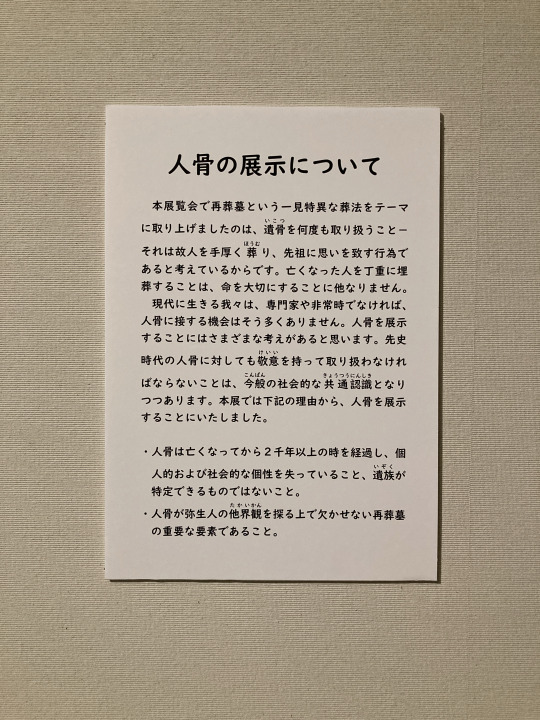
東日本の再葬墓出土品の代表者の皆さん。小さい土偶型のものには子どもの骨や歯を入れたらしい。弥生時代の人々も小さな子の死にはとりわけ心を痛めたのだろうなと思う。
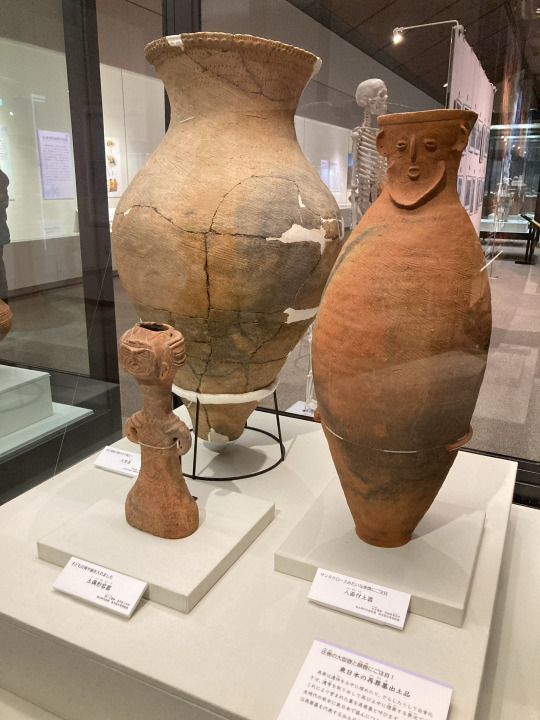
こちらは吉野ヶ里遺跡の祭祀土器。赤く塗られた特別な土器で、打ち割って埋納されたものと考えられている。

プロローグとして九州北部の甕棺墓(かめかんぼ)が紹介されていた。
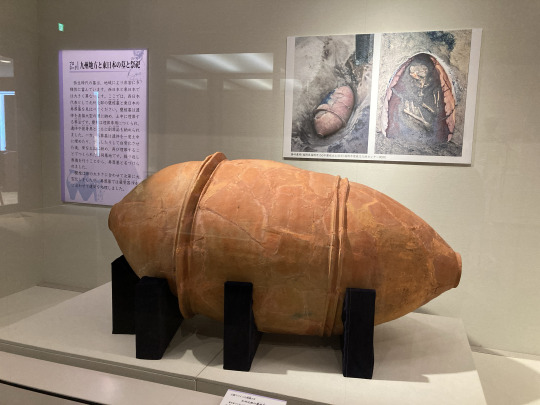
ここからが再葬墓の展示の本番。まずは再葬のプロセスの紹介。まず岩陰などで埋葬・風葬する(一次葬)。その後、遺骨をとり出して解体・選骨。骨や歯に穴を開けてペンダントにしたり、骨を焼いて岩陰に置いたり、骨壺に納めたりする。最後に、管玉を割り、土器をまとめて埋める(二次葬)。
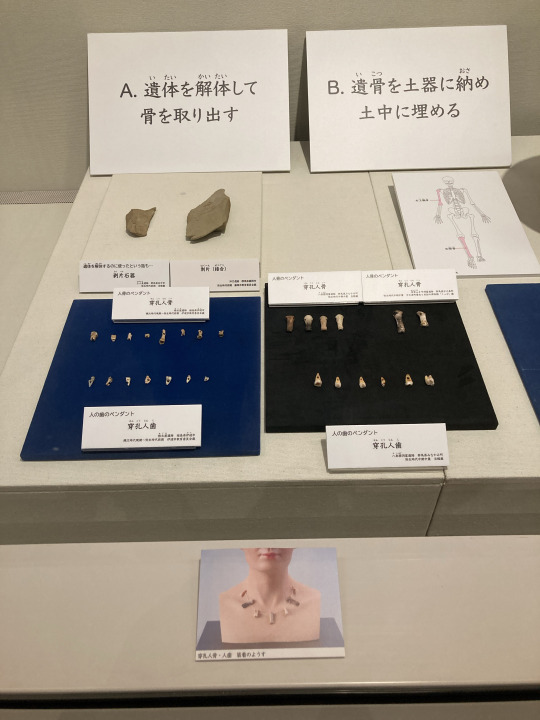

下の写真は壺の中から全身の骨が見つかった珍しい例の展示。

焼かれた遺骨の数々。四角い透明のケースに入っているものもすべて人骨。

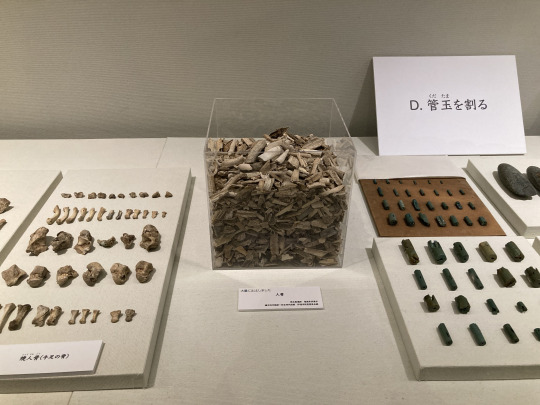
左は管玉など、右はさまざまな副葬品。

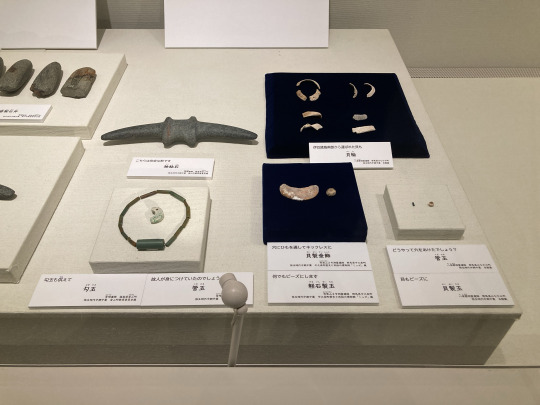
再葬墓の源流は縄文時代の再葬にあるのではないか?と考えられる考古学的な証拠として、群馬県内の遺跡の出土品を展示している。
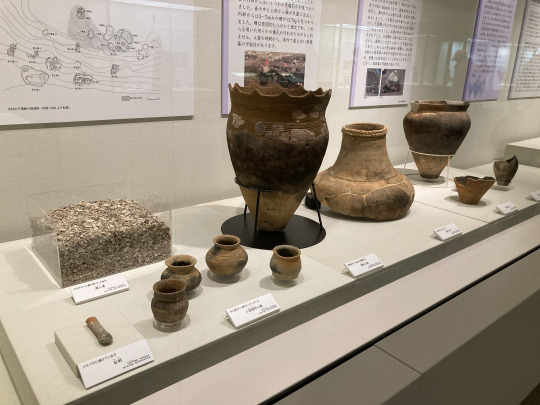
下の数枚の写真は、群馬県内の弥生時代の遺跡である岩櫃山鷹の巣岩陰遺跡の土器が、ひさしぶりに集合しているところ。
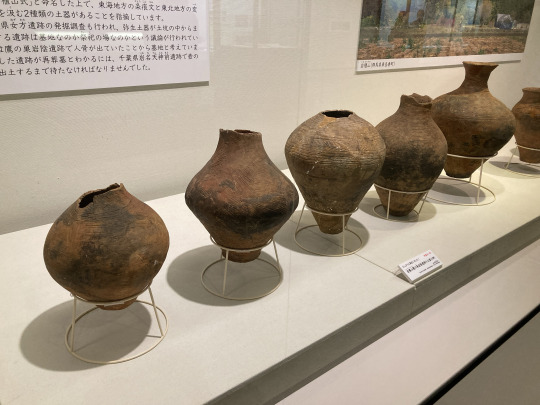


岩櫃山はこんな感じで岩が切り立っていて、登るのが楽ではなさそうである。
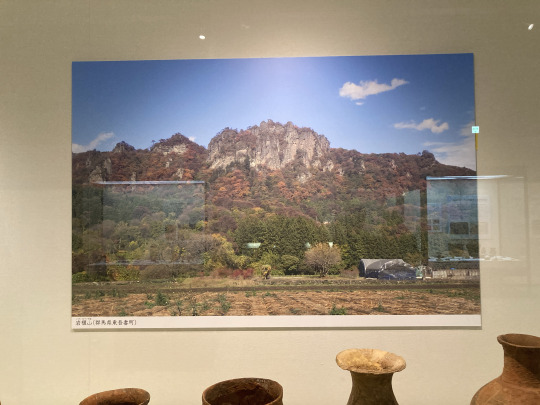
このあと、群馬県内および隣県近県の遺跡ごとに出土品を紹介する展示がたくさんあった。キャプションにはところどころ学芸員コメントが入っており、たとえば「オバQみたいな口がキュート」とか……

岩名天神前遺跡(千葉県佐倉市)の出土品を展示したケースの中には……

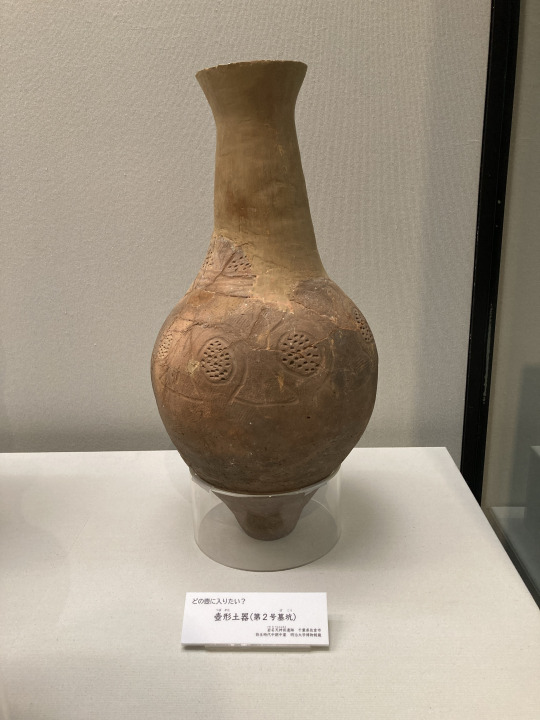
「どの壺に入りたい?」……その発想はなかったが、たしかに「自分が入るならどれがいいかな?」と考えながら見ていけば、漫然と眺めただけでは似たり寄ったりにしか見えない土器の個性に気づけるかもしれない。
メインビジュアルに採用されたお方をさまざまなアングルで。


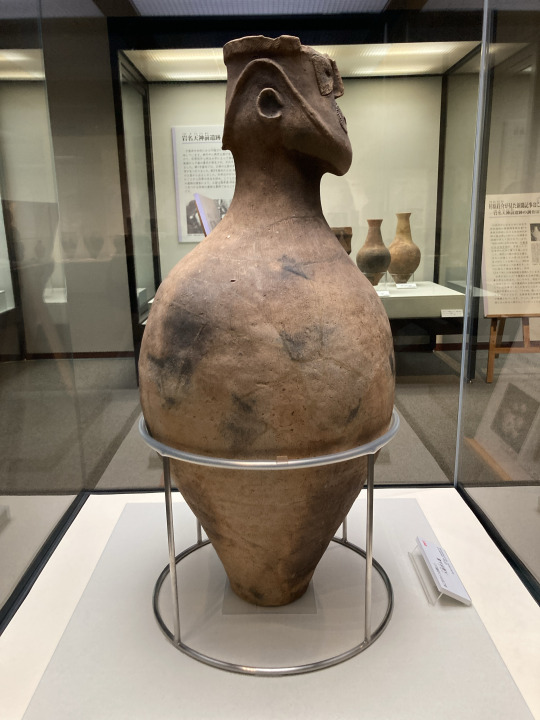

弥生時代の人々の暮らしにフォーカスした展示。レプリカ法(土器などをシリコンで型取りし、表面に残っている微細な圧痕を電子顕微鏡で観察する分析法)によって、アワなどの穀物の痕跡が見つかっている。

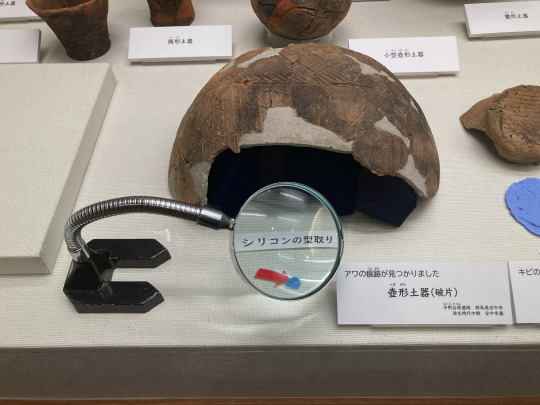

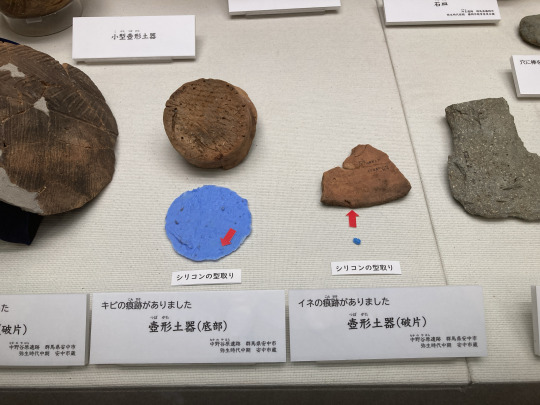
再葬墓が姿を消していった時代の遺跡の紹介も。

再葬の儀礼に関連して、沖縄地方の洗骨葬についても取り上げられていた。撮影不可だったが洗骨葬の一部始終を収めた写真が展示されており、非常に興味深かった。
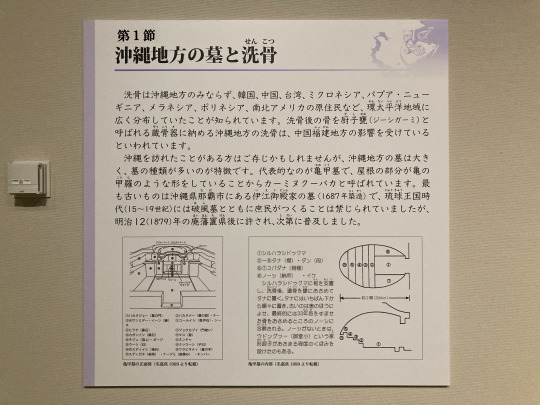
0 notes
Text
古代ロマンと歴史にひたる九州へ 吉野ヶ里遺跡・邪馬台国と卑弥呼の謎に迫る | 朝日新聞デジタルマガジン&[and]
https://www.asahi.com/and/article/20230915/424113409/
1 note
·
View note
Text
0 notes
Video
youtube
吉野ヶ里遺跡“謎のエリア”で発見の「石棺墓」調査進む…“邪馬台国論争”に一石投じる可能性は?【サンデーモーニング】|TBS NEWS DIG
0 notes
Text
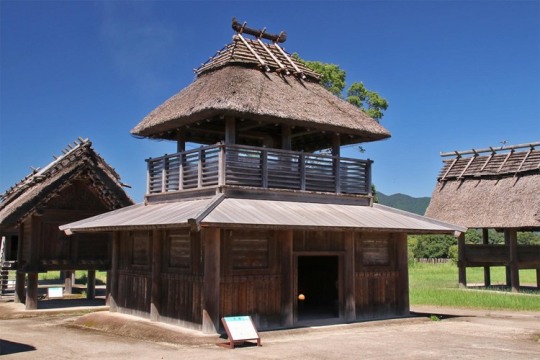

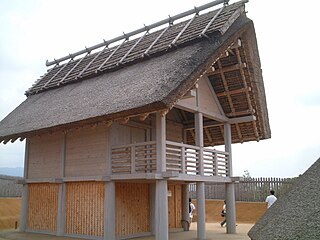

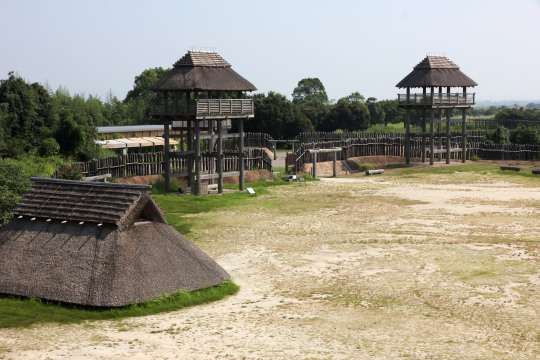
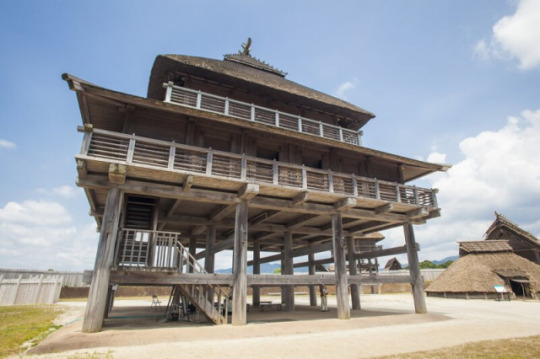
Sean bienvenidos, japonistasarqueológicos, a una nueva entrega de arqueología nipona, una vez dicho esto pónganse cómodos qué empezamos. - Nos volvemos a trasladar a la prehistoria japonesa que, cada día, nos sorprende con un nuevo hallazgo arqueológico. Las ruinas de Yoshinogari, datan del periodo Yayoi(III-IV) pero en este caso del Yayoi tardío y se localizan en la prefectura de Saga¿Cuándo llegó el arroz a japón? Y¿por dónde llegó? Hay dos teorías: una que llegó de china y la otra desde Corea hasta la isla de Kyushu a través del mar de Ariake. El enorme asentamiento está rodeado por tres fosos y es la raíz de los castillos en Japón, ha sido seleccionado como uno de los 100 castillos más famosos de Japón. - En el periodo Yayoi, se caracteriza porque es cuando aparecen las clases guerras y las clases dirigentes a raíz de la acumulación de poder, esto corresponde a los jefes locales, por ejemplo: La residencia de la clase dominante en el recinto interior sur, no confundir con realeza japonesa, hay que recordar que a los poblados se les instalaba un punto religioso, por aquella época predominaba el Sintoismo como: es el caso del santuario principal construido en el recinto interior norte. - El yacimiento cuenta con atalaya del recinto interior sur, de carácter defectivo, al sur se encuentra el pueblo con viviendas tipo foso y almacenes para guardar el arroz rojo que era el que se cultivaba en aquella época y en la ciudad de Karatsu, también en la prefectura de Saga, se encuentran las ruinas de Nabatake, las ruinas de cultivo de arroz más antiguas de Japón. - Durante el periodo Yayoi y Kofun tuvieron lugar una serie de migraciones desde la península de corea, esto trajo consigo que las poblaciones coreanas y japonesas de la zona se mezclaran generando mestizos, además de transmitir sus conocimientos de la agricultura. - Espero que os haya gustado y nos vemos en próximas publicaciones, que pasen una buena semana. Welcome, Japanese archaeologists, to a new instalment of Japanese archaeology, so make yourselves comfortable and let's get started. - We move back to Japanese prehistory, which surprises us every day with a new archaeological find. The ruins of Yoshinogari, dating from the Yayoi period (III-IV) but in this case from the late Yayoi period, are located in the prefecture of Saga When did rice arrive in Japan? And where did it arrive? There are two theories: one that it came from China and the other from Korea to the island of Kyushu via the Ariake Sea. The huge settlement is surrounded by three moats and is the root of castles in Japan, it has been selected as one of the 100 most famous castles in Japan. - The Yayoi period is characterised by the emergence of the warring and ruling classes as a result of the accumulation of power, this corresponds to the local chiefs, for example: The residence of the ruling class in the southern inner precinct, not to be confused with Japanese royalty, it should be remembered that the villages had a religious point installed, at that time Shintoism predominated, such as the main shrine built in the northern inner precinct. - The site has a watchtower in the southern inner enclosure, which is defective, to the south is the village with moat-like dwellings and warehouses for storing the red rice that was cultivated at the time, and in the town of Karatsu, also in Saga Prefecture, are the ruins of Nabatake, the oldest rice cultivation ruins in Japan. - During the Yayoi and Kofun period a series of migrations from the Korean peninsula took place, which resulted in the mixing of the Korean and Japanese populations in the area and the passing on of their knowledge of agriculture. - I hope you liked it and see you in future posts, have a good week.
#日本#韓国#考古学#遺跡#佐賀県#九州#歴史#先史#新石器時代#文化#吉野ヶ里遺跡#地理#弥生時代#有明海#唐津市#鍋岳遺跡#ユネスコ#photo#japan#archaeology#archaeologicalrests#Prefectureofaga#Kyushu#history#prehistory#neolithic#riceculture#Yoshinogariruins#geography#yayoiperiod
36 notes
·
View notes
Text
Aya at Yoshinogari.

Yoshinogari (吉野ヶ里 遺跡, Yoshinogari iseki) is the name of a large and complex Yayoi archaeological site in Yoshinogari and Kanzaki in Saga Prefecture, Kyūshū, Japan. According to the Yayoi chronology established by pottery seriations in the 20th century, Yoshinogari dates to between the 3rd century BC and the 3rd century AD. However, recent attempts to use absolute dating methods such as AMS radiocarbon dating have shown that the earliest Yayoi component of Yoshinogari dates to before 400 BC. (Sourced from Wikipedia)
#touhou project#東方Project#射命丸文#shameimaru aya#tegaki_dt#tegakidraw#drawn in one hour at night#深夜の真剣お絵描き60分一本勝負#koubudraw#historical site#yayoi culture#yoshinogari#crow#camera#my art
54 notes
·
View notes
Quote
吉野ヶ里遺跡が仮に邪馬台国じゃなかった、と判明したところで 『邪馬台国かと間違えられる程のデカい何か』という謎の存在になるのほんと面白い
なが��サきさんはTwitterを使っています
27 notes
·
View notes
Photo

📸館林市文化会館 日本庭園(群馬県館林市) Tatebayashi City Cultural Center Japanese Garden, Tatebayashi, Gunma ——“徳川四天王”榊原康政や江戸幕府五代将軍・徳川綱吉らが城主とつとめた『館林城』跡は日本遺産『館林の里沼』の構成文化財。そんな城跡🏯に昭和年代に作庭された、独特な作風の日本庭園。現在の愛称は“カルピスホール”、建築の設計は #日建設計 。 群馬・館林市文化会館 日本庭園の紹介は☟ https://oniwa.garden/calpis-hall-tatebayashi/ ...... 「館林市文化会館」は群馬県館林市の文化会館。江戸時代には“徳川四天王”のひとり・榊原康政の他に江戸幕府五代将軍・徳川綱吉らが城主となった『館林城』があった場所で、一帯が『館林城跡』として館林市指定史跡(日本遺産『館林の里沼(SATO-NUMA)』の構成文化財でもあります)。大ホールと小ホールの間に池泉回遊式の日本庭園があります。 国指定名勝のツツジの名所『躑躅ヶ岡』(つつじが岡公園)を目的に訪れた館林市の少しマニアックな庭園を紹介。 他の写真は @oniwastagram のプロフURLか上記のURLから。 - - - - - - #庭園 #日本庭園 #建築デザイン #ランドスケープ #japanesegarden #japanesegardens #japanesearchitecture #japanarchitecture #japanarchitect #japandesign #jardinjaponais #jardinjapones #japanischergarten #jardimjapones #landscapedesign #群馬建築 #庭院 #庭园 #館林市 #館林 #tatebayashi #文化会館 #城跡 #城郭 #文化財 #日本遺産 #徳川四天王 #徳川綱吉 #おにわさん (館林市文化会館) https://www.instagram.com/p/Cnnx_hbvL1k/?igshid=NGJjMDIxMWI=
#日建設計#庭園#日本庭園#建築デザイン#ランドスケープ#japanesegarden#japanesegardens#japanesearchitecture#japanarchitecture#japanarchitect#japandesign#jardinjaponais#jardinjapones#japanischergarten#jardimjapones#landscapedesign#群馬建築#庭院#庭园#館林市#館林#tatebayashi#文化会館#城跡#城郭#文化財#日本遺産#徳川四天王#徳川綱吉#おにわさん
1 note
·
View note
Text
0 notes